Australia v England ODI analysis: What choosing Pat Cummins as captain means for World Cup
Pat Cummins seemed like the logical choice as Australia’s ODI captain. But, only weeks into his tenure, a big problem has emerged. Ben Horne investigates.
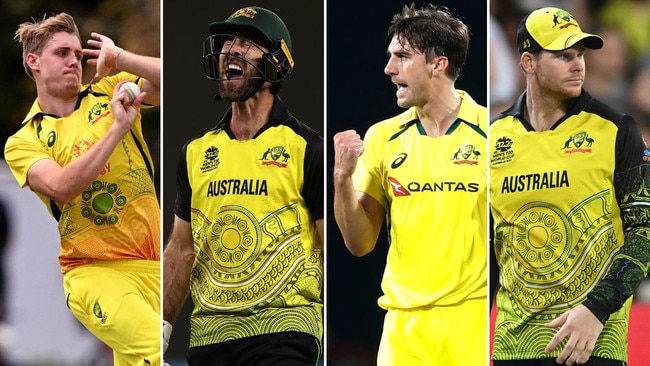
Cricket
Don't miss out on the headlines from Cricket. Followed categories will be added to My News.
Even before he bowled a ball in his impressive debut as Australian ODI captain, Pat Cummins was under pressure.
It wasn’t illness.
And it wasn’t Australia’s recent demise at the T20 World Cup.
It was the fact that by being named captain, selectors have given Cummins a very privileged entry into a bowling attack which is so well stocked it left out Josh Hazlewood on Thursday for the first match against England.
This is an issue that will rumble on for the next 12 months, because for a 50-over World Cup to be played in India, it’s unlikely Australia will be able to field an XI featuring all three of their fast bowling aces Cummins, Hazlewood and Mitchell Starc.

Not when two spinners will likely be needed in the subcontinent, and in all-round superstar Cameron Green, Australia effectively has a third seamer already capable of bowling the 10 overs and boosting the length of the batting order to give greater overall balance to the XI.
What makes the conundrum so complicated is the fact Hazlewood (No. 2) and Starc (No. 8) rank much higher on the world ODI rankings than Cummins (No. 18).
That’s why the sight of Cummins firing up and taking early wickets against England in Adelaide was so important for an Australian team looking to build momentum into its ODI World Cup journey.
With Cummins blazing and setting the tone leading from the front with the ball, this Australian team can really hum.
But without the skipper at the peak of his powers, a major selection headache could emerge.
Cummins is clearly a world class, once-in-a-generation bowler regardless of the format or what the rankings say, but the fact is Starc is arguably Australia’s greatest ever 50-over bowler and Hazlewood the most improved white ball bowler in world cricket over the past 18 months.
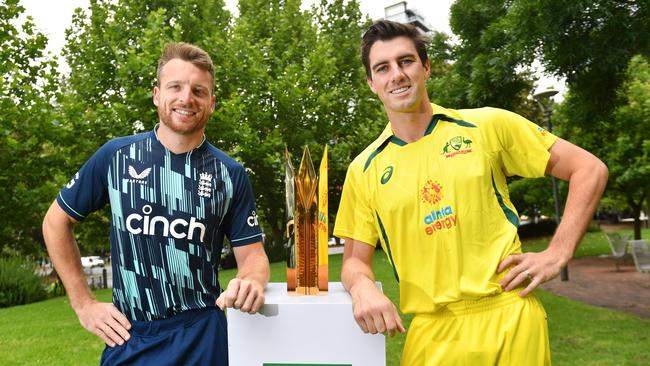
When three doesn’t go into two and Cummins’ captaincy makes him an automatic selection, it could make for some tight, tight calls come next year’s World Cup.
Cummins has certainly given himself the best chance to dominate 50-over cricket by standing down from next year’s IPL, in what was a sign of his focus, desire and commitment to the cause.
The fact is Cummins hasn’t played much ODI cricket compared to Hazlewood and Starc over the past two years because it has been the chosen avenue for him to rest from the ridiculously packed schedule.
But now it’s 12 months out from a World Cup year, Cummins will play the majority of ODI matches and would be expected to roar back up the rankings.
The way Cummins’ ripped through England top order stars Phil Salt and James Vince on Thursday was reminiscent of the electric surge his captaincy has created in Test cricket.
If the same can happen in ODIs it’s good news for Australia’s World Cup chances.
12 BURNING AUSSIE CRICKET QUESTIONS ANSWERED — WITH BEN HORNE AND CRASH CRADDOCK
Australia failed to make the semi-finals in their home T20 World Cup, but there is another trophy up for grabs next year, with the ODI World Cup just around the corner.
What lessons will be learnt, who will the Aussies turn to on the selection front and how will the Aussies handle the conditions in India?
Ben Horne and Robert Craddock answer all the big questions.
Robert ‘Crash’ Craddock: Are there any lessons Australia can take out of the T20 World Cup for next year’s 50-over world cup?
Ben Horne: The big lesson is attitude. I think in their efforts to try and not peak too early, Australia was a bit too cool for school in the T20 World Cup and just didn’t fire up enough. Australia’s batsmen weren’t aggressive enough and the bowlers also lacked a killer instinct. There is an intimidation factor Australia can carry in world cups which opposition teams struggle to cope with, but only if the players come out and show an intent to dictate terms and dominate.
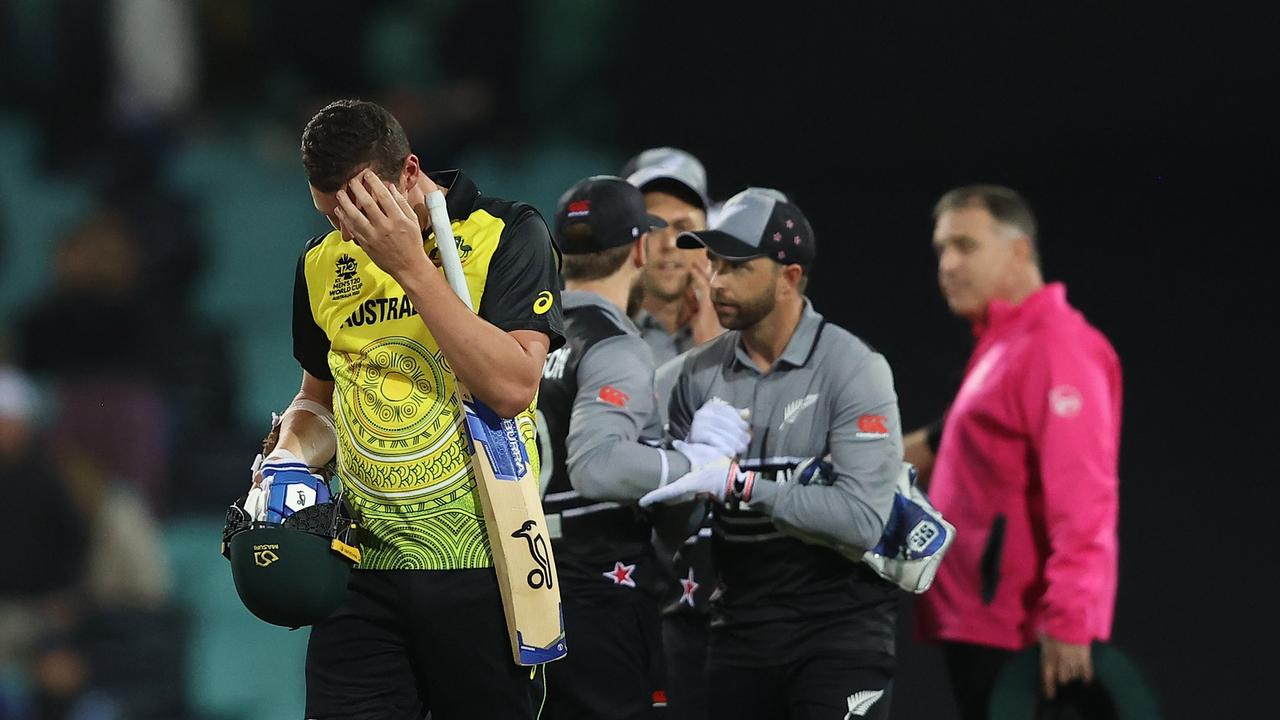
Ben Horne: Crash, are you concerned by the average age of the Australian team?
Crash: It is a concern that most are nearing the end of their careers and that tournament could be the swan song for a lot of players. You don’t grow old gracefully in India, especially if you have just played an Ashes series which followed an Indian Test tour. It is a brutal year. I always like seeing one young, desperate underpaid scrapper in there to bring an electric crackle to proceedings.
Crash: Will there be more retirements before then?
Horne: Not before the world cup, I don’t think. Even if Warner calls time on his Test career, he will still carry on in the white-ball formats. I think all the experienced players will be viewing this 50-over world cup as a major milestone they’d like to target and it’s more after an event like this that you might see blokes hang up the gloves. Mitchell Starc would be the one concern if selectors decided the bizarre call to drop him during the T20 World Cup was not a match-up decision, and in fact a new direction.

Horne: Will next year’s world cup tournament save 50-over cricket?
Crash: No, because it does not change the fact that 50-over white -ball tournaments played between the world cups lack any sort of major significance. The world cups are always good value but it’s a bit like tennis between the majors. It’s a worry.
Crash: Is Australia missing a trick not having a specialist white-ball coach?
Horne: It’s an interesting question because I sensed last year when the merits of splitting the men’s coaching role was discussed in the wake of Justin Langer’s departure, that Andrew McDonald was not against the idea. In the end Cricket Australia decided it wanted continuity across the whole men’s program and wanted to avoid potential clashes between red and white ball coaches over selection and availability. It’s too early to tell whether CA has locked itself into the wrong model, but if Australia can’t fire at next year’s ODI World Cup then I think splitting the roles needs to be seriously looked at.
Crash: Do you think any bolts from the blue might emerge selection wise for the 50-over World Cup?
Horne: Tim David would be an interesting one, Crash. Unfortunately he didn’t really get to show his wares in the world cup, but I think he was probably still a good selection. David’s record in the IPL was excellent this year and it’s a curious question whether his big-hitting talents could translate to the 50-over game. There’s probably not room for David and Glenn Maxwell in the same XI and, if not, Maxwell is the more accomplished bowler.
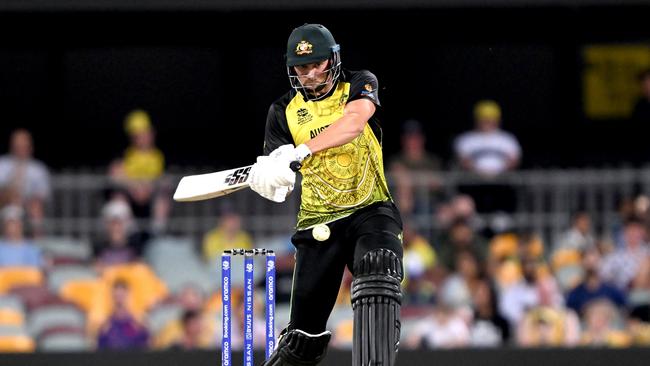
Horne: Is Maxwell a lock in your ODI World Cup team?
Crash: No. His broken leg is reportedly very serious so just coming back and playing normally may be harder than people realise. He’s 34. A lot of careers are over at that age. His injury is a supreme test of his commitment. I sense Australia in recent times has wanted much more from him.
Horne: Can Steve Smith and Marnus Labuschagne fit into the same 50-over batting order?
Crash: They could because Labuschagne’s leg-spin could be useful so he could be something of an all-rounder. I don’t mind having Smith and Marnus if there is some firepower around them like Marcus Stoinis and Mitch Marsh.
Crash: Will Australia play three specialist quicks in India or will one have to miss out?
Horne: Australia has shown a determination to move more towards an English model of batting as deep as possible in ODI cricket, and that could mean Cameron Green coming in as low as No.8. Given the likelihood multiple spin options will be needed in Indian conditions, Australia may look to back Green as the third seamer, which means one of Mitchell Starc, Josh Hazlewood or Pat Cummins may have to miss the XI. That’s one hell of a tough conundrum when Hazlewood (No. 2) and Starc (No. 8) are both higher ranked than the seemingly undroppable captain Cummins (No. 18).
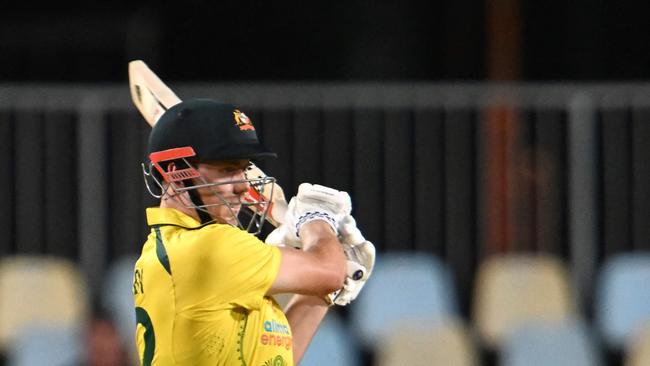
Horne: Is it a risk making Cummins a white-ball captain?
Crash: He hasn’t done much of it so there is a risk particularly as players say the 50-over tournament is the toughest on the body. But in such an experienced team he can always turn to Smith or Warner or Carey for guidance. The Test tour of India a few months earlier will be harder for him.
Crash: Who would be your back-up captain if Cummins goes down?
Horne: I would go David Warner. Carey has enough on his plate as the wicketkeeper, Marsh doesn’t have a huge amount of captaincy experience on the big stage, and I think in a world cup you need your back-up captain to be an experienced head. Warner has a terrific grasp on tactics and Indian conditions and he’s the natural insurance policy for a fast bowling captain who might not be able to play every game. All predicated on his captaincy ban being overturned, of course.
Horne: Is Travis Head’s struggle on slow pitches in Test cricket relevant for a 50-over world cup?
Crash: Yes but he should find himself opening, which is the best place to bat in India, especially if you are allergic to spin. It’s worth investing in Head even though he was poor in Tests on the subcontinent this year.





